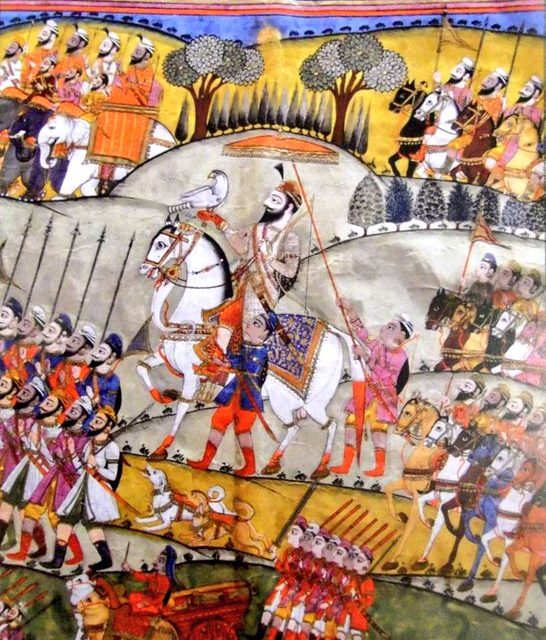BHALAN, village near the confluence of Soah rivulet with the River Sutlej 14 km south of Nangal in Ropar district of the Punjab, is sacred to Guru Gobind Singh, who arrived here following Khanzada Rustam Khan in the winter of 1693-94. As Guru Gobind Singh himself relates in his Bachitra Natak, the Khanzada had planned to surprise the Sikhs with a night attack, but finding the defendants alert he beat a hasty retreat. "Ravaging Barva village (on his way back)," records Guru Gobind Singh, "he made a halt at Bhalan." The shrine rebuilt by the local sangat in 1960 is called Gurdwara Dashmeshgarh (lit. Fort of the Tenth Master). It is a small square sanctum with a circumambulatory verandah around it. The Gurdwara is managed by a committee of the local Sikhs.
BURN, LtCoL, who commanded British detachments at Deoband, now in Uttar Pradesh, led in 1804 an expedition against the cis Sutlej Sikh chiefs, Gurdit Singh ofLadva and Karnal, Sher Singh of Buna, Rai Singh of Jagadhri, Jodh Singh of Kalsia and Mahtab Singh of Thanesar, who had fought against the British in alliance with the Marathas in 1803. Burn`s troops joined hands with those of Birch and Skinner, and defeated the Sikhs at Saharanpur on 18 December 1804. The British commanderin chief granted amnesty to all the Sikhs except Gurdit Singh. Burn arrived at Karnal, and secured from him the surrender of the town.

DAL KHALSA is the term used to describe the militia which came into being during the turbulent period of the second half of the eighteenth century and which became a formidable fighting force of the Sikhs in the northwestern part of India. The first Khalsa army formed and led by the creator of the Khalsa, Guru Gobind Singh (1666-1708), had broken up at the time of the evacuation of Anandpur in December 1705. Another force, at one time 40,000 strong, raised by Banda Singh Bahadur (1670-1716) was scattered after the caputre and execution of its leader.
Aris Daya Singh (1894 - 1946) was popular writer of devotional and didactic verses. He belonged to a backard rural family of farm labourers called Mazhabi Sikhs. Having been thrased by his poor father, Santa Singh, because of his pursuit of learning, left home and started living as a recluse; learnt Punjabi, Hindi, anskrit, Urdu, Persian and Arabic: and studied scriptures of the Sikhs, Hindus and Muslims from their traditional teachers at their respective places of worship and instruction. He began writing poetry while in teens and published his maiden book, Fanah da Makan (Abode of Mortality), in 1914: followed by his most popular work, Zindagi Bilas (Discourse on Life), in 1915.









